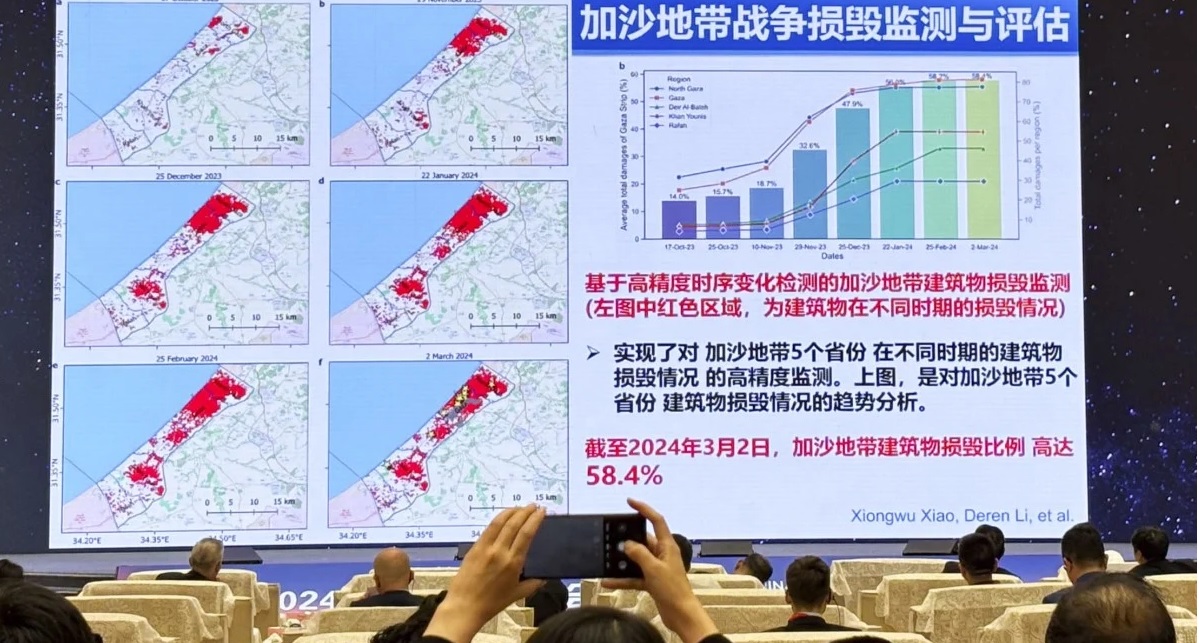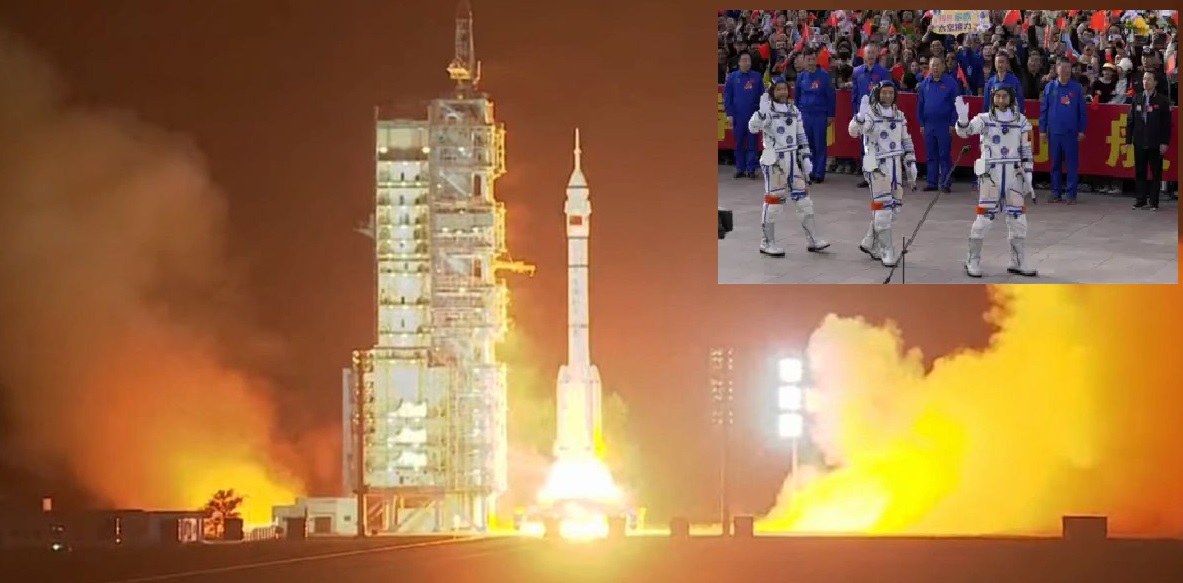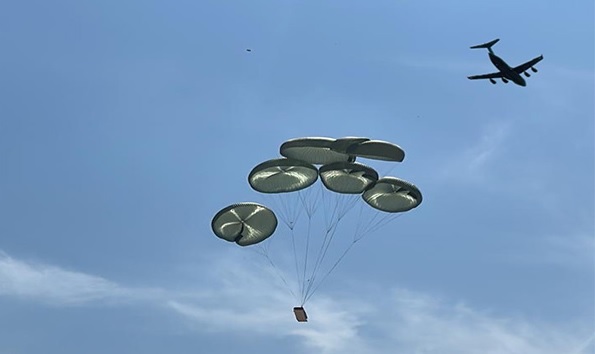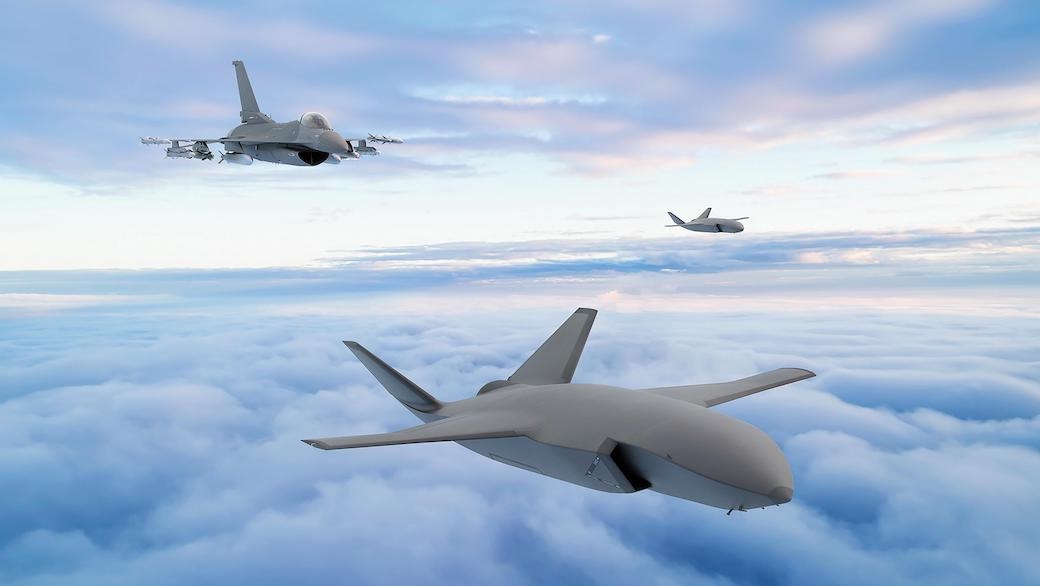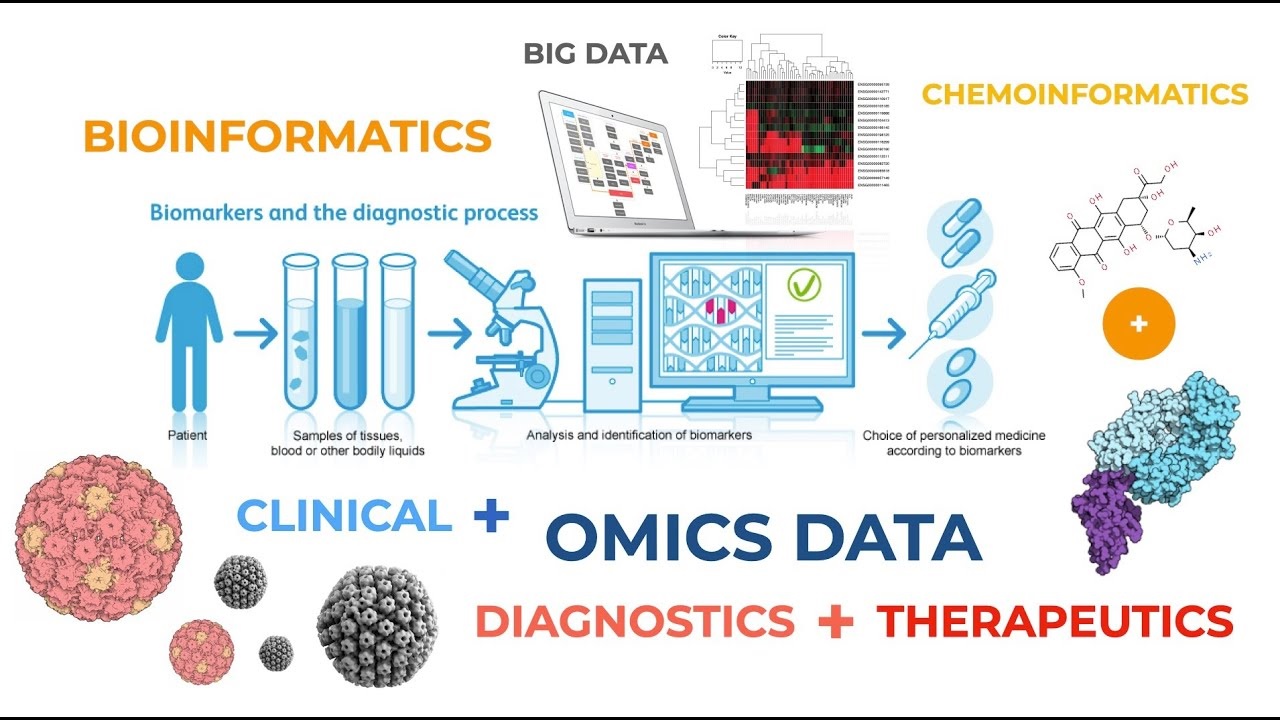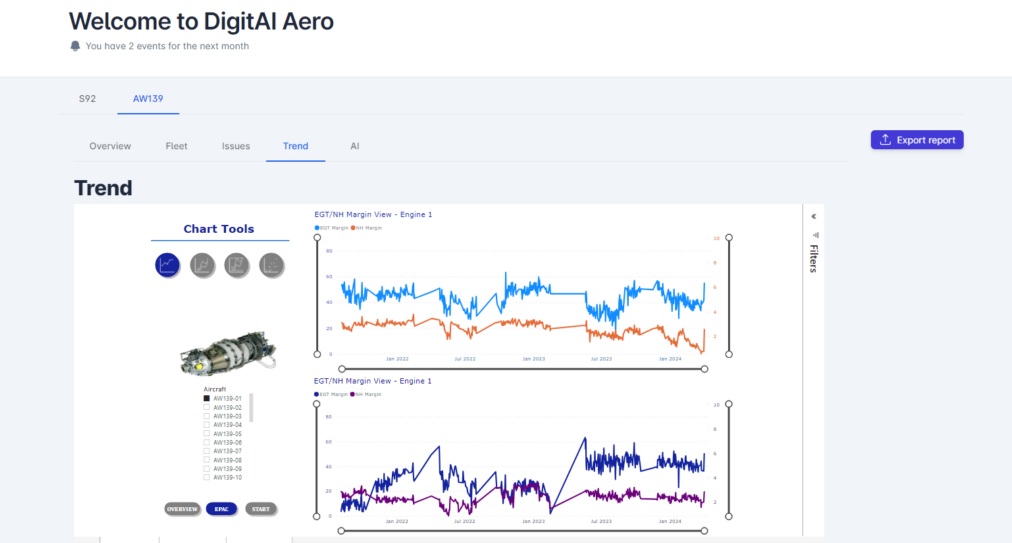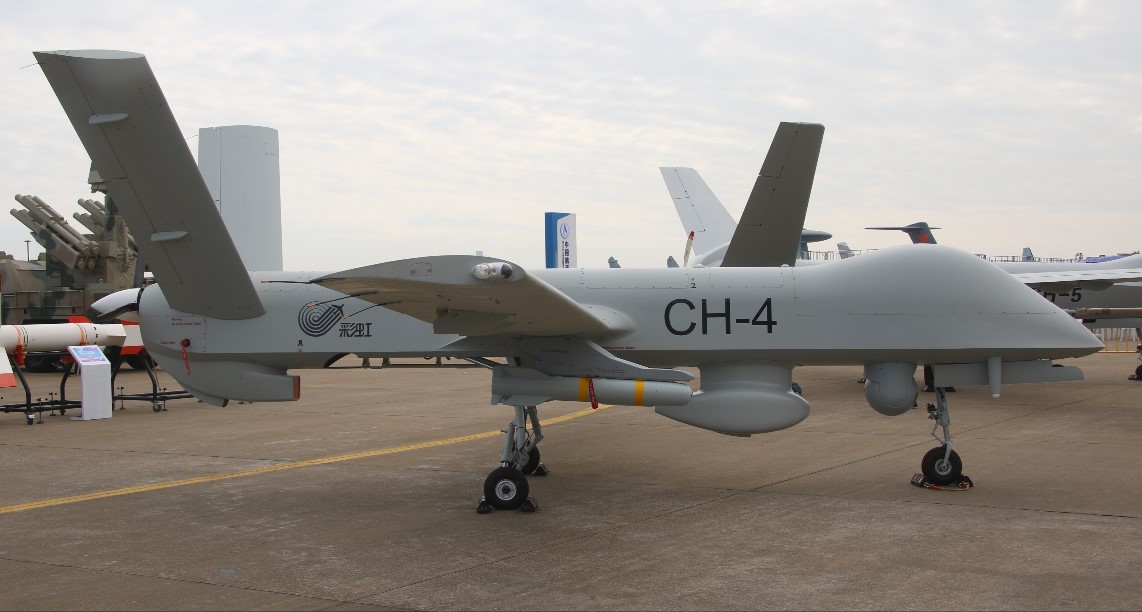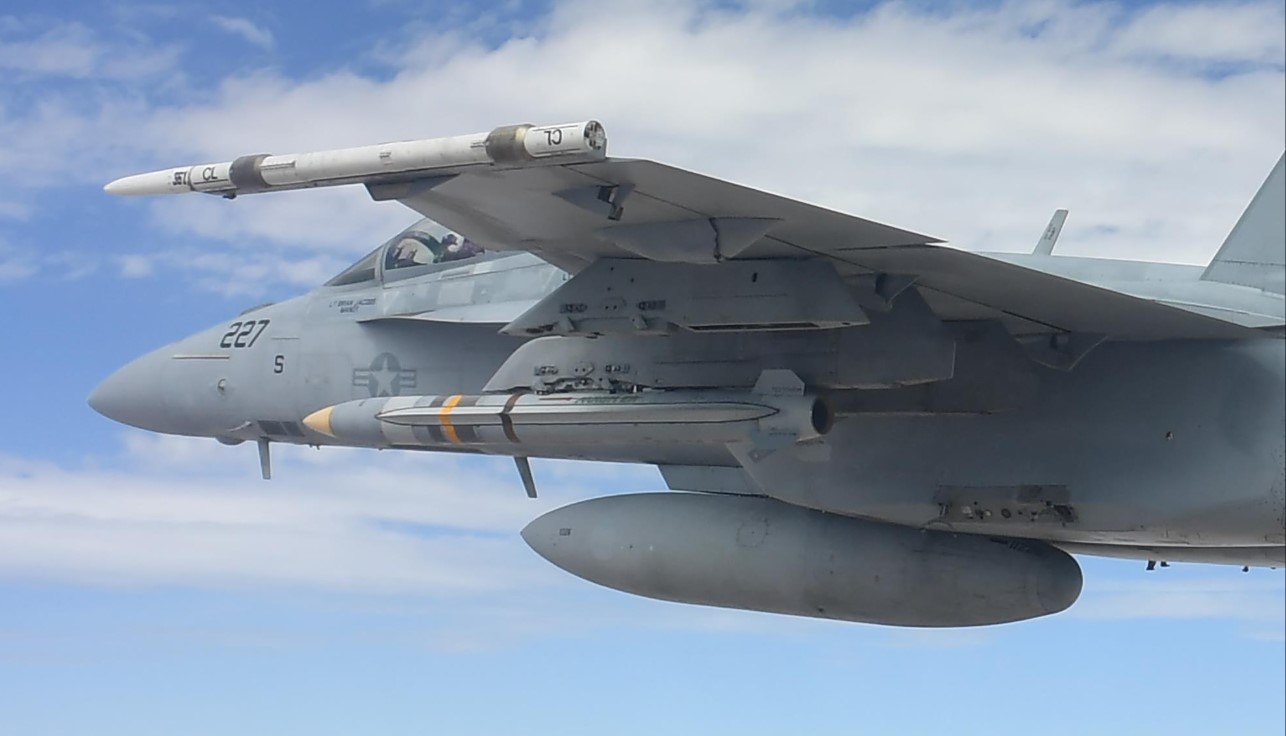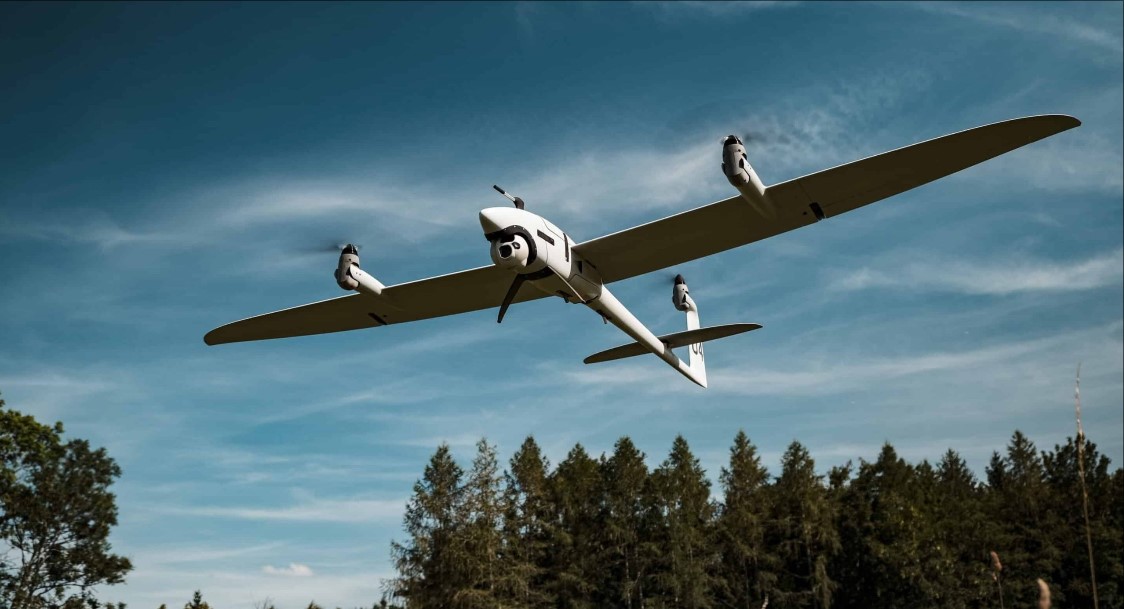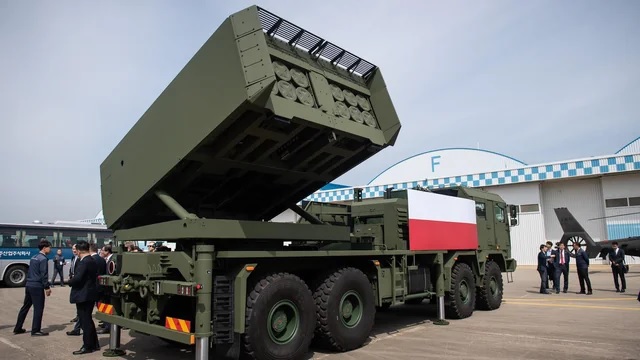World
China ,Israel Chinese satellite analysis reveals extensive damage in Gaza, with 58.4% of buildings and 34.1% of farmland damaged, showcasing advancements in remote sensing technology. This milestone underscores the urgent need for international attention and support in addressing the humanitarian crisis in the region.In the realm of remote sensing technology, recent advancements have unveiled a groundbreaking development in assessing the aftermath of conflict zones. Chinese satellite imagery, presented at the China Space Conference, sheds light on the extent of destruction in Gaza, offering a comprehensive analysis that was previously unattainable.According to Professor Li Deren from Wuhan University, utilizing data from the Luojia-3 and Dongfang Huiyan Gaofen01 satellites, an estimated 58.4 per cent of buildings and 34.1 per cent of farmland in Gaza have been damaged. This marks a significant milestone in remote sensing capabilities, as it provides detailed insights into the progression of destruction over time.The analysis, based on observations dating back to October 17, before the Israeli invasion of Gaza, employs advanced automated recognition algorithms to detect and assess damage to various structures, including crucial facilities such as schools, hospitals, and places of worship. The findings reveal a gradual escalation of destruction, with the percentage of damaged buildings increasing from 18.7 per cent before November 10 to a staggering 58.4 per cent by March 2.In addition to assessing structural damage, the satellite imagery also identifies the location, size, and number of missile craters over time, uncovering a total of 3,747 craters in the Gaza region by March 2. Furthermore, the analysis highlights disparities in damage between different areas, with Gaza City sustaining twice the destruction compared to Deir al Balah City.The significance of this analysis lies not only in its scope but also in its ability to fill crucial gaps in knowledge about the extent of damage in Gaza. Traditional ground surveys are often hindered in conflict zones, making it challenging to obtain accurate assessments of destruction. While platforms like Google satellite imagery offer valuable insights, they lack the granularity provided by the Chinese satellite data.China's emergence as a leader in Earth observation networks is underscored by the transformative development of its remote sensing satellites. Professor Li emphasizes the growing influence of China's space-based observations, citing their broad scope, timeliness, and geopolitical independence. With ongoing advancements in remote sensing technology, including more frequent imaging, larger coverage areas, and faster data transmission, China is poised to further elevate its capabilities in monitoring and analyzing global events.The implications of this milestone extend beyond the realm of technology, highlighting the urgent need for international attention and support in addressing the humanitarian crisis in Gaza. The destruction of vital infrastructure jeopardizes the well-being of civilians and exacerbates existing challenges in the region.In conclusion, the Chinese satellite analysis of Gaza represents a significant step forward in remote sensing technology, offering unprecedented insights into the aftermath of conflict. As advancements continue to unfold, it is imperative that stakeholders leverage this data to inform decision-making and support efforts towards peace and reconstruction in affected regions.
Read More → Posted on 2024-04-26 08:54:07Space & Technology
ChinaChina successfully launches Shenzhou 18 spacecraft with a three-person crew to join Tiangong space station, advancing its ambitions in space exploration.China marked another milestone in its space exploration journey with the successful launch of the Shenzhou 18 spacecraft, carrying a three-person crew, from the Jiuquan Satellite Launch Center in the Gobi Desert. The Long March 2F rocket lifted off at 8:59 a.m. EDT on April 25, 2024, carrying veteran astronaut Ye Guangfu, alongside spaceflight rookies Li Cong and Li Guangsu.Following a flawless launch, the Shenzhou spacecraft separated from its launch vehicle approximately 10 minutes into the flight, confirming the success of the mission. Commanded by Ye Guangfu, who previously participated in the Shenzhou 13 mission, the crew is set to spend approximately six months in space.Ye Guangfu expressed a sense of duty and responsibility ahead of the launch, highlighting the difference between his first spaceflight filled with excitement and curiosity, and the current mission characterized by a sense of mission and duty.The Shenzhou 18 spacecraft is scheduled to dock with the Tiangong space station approximately 6.5 hours after liftoff. The crew will join the Shenzhou 17 crew aboard the orbital outpost, who are completing their six-month mission and preparing to return to Earth.Upon arrival at Tiangong, the Shenzhou 18 crew will engage in various activities, including extravehicular activities (EVAs), live science lectures to school children in China, and a series of cargo and science experiments. Lin Xiqiang, deputy director of the China Manned Space Agency, outlined plans for six cargo outbound deliveries via the station's cargo airlock module and two to three extravehicular activities during a recent press conference unveiling the Shenzhou 18 crew.The crew's supplies, delivered by the Tianzhou 7 cargo spacecraft in January, will be replenished around August by the Tianzhou 8 spacecraft, bringing fresh supplies, equipment, and experiments to Tiangong.Meanwhile, preparations for the upcoming Shenzhou 19 mission are underway at the Jiuquan Satellite Launch Center. A new Long March 2F rocket will be maintained in a state of near readiness, ensuring it can be launched promptly as a lifeboat in the event of an emergency.China's Tiangong space station, constructed in 2021 and completed in late 2022, has been hosting crews of three astronauts for six-month durations. The station, roughly 20% of the mass of the International Space Station, is intended for permanent occupation for at least a decade. China is considering future expansions and opening the outpost to commercial activities.In conclusion, the successful launch of the Shenzhou 18 mission demonstrates China's continued progress in space exploration and its commitment to establishing a long-term presence in space. With plans for further missions and the expansion of the Tiangong space station, China is poised to play a significant role in shaping the future of space exploration.
Read More → Posted on 2024-04-26 07:19:33India
India Indian Air Force demonstrates operational synergy by airdropping a heavy platform with the Indian Army, showcasing indigenous defense capabilities. Successful test firing of an air-launched ballistic missile adds strategic firepower to India's defense arsenal.In a display of effective teamwork and operational prowess, the Indian Air Force (IAF) recently conducted a successful airdrop mission involving a C-17 transport aircraft and an indigenously developed heavy platform. The platform, capable of carrying loads exceeding 22 tonnes, was deployed in conjunction with the Indian Army and the Aerial Delivery Research and Development Establishment (ADRDE), a premier defense research laboratory.The joint demonstration showcased the smooth coordination between the IAF's air mobility fleet and ground forces, emphasizing the reliability and capability of domestically developed platforms. The event, held in the western sector, underscored the importance of such collaborations in enhancing combat capabilities.Prior to this feat, the Indian Air Force achieved another milestone with the successful test firing of an air-launched ballistic missile. Conducted by a Su-30 MKI fighter jet at a test range in the Andaman and Nicobar Islands, the missile demonstrated its ability to engage targets at distances exceeding 250 kilometers.The missile, identified as the Crystal Maze 2 or ROCKS, originated from Israel and has been integrated into the Indian Air Force's arsenal. This test firing represents a significant step forward in India's defense capabilities, showcasing its ability to deploy advanced weaponry for strategic purposes.Overall, these developments highlight the Indian Air Force's commitment to advancing its operational capabilities through innovation, collaboration, and the integration of cutting-edge technology. Such endeavors contribute to strengthening national security and safeguarding India's interests in the region.
Read More → Posted on 2024-04-26 07:00:44India
India ,Italy Indian PM Narendra Modi thanked Italian PM Giorgia Meloni for the G7 Summit invite, discussing plans to advance #G20India outcomes and deepen the strategic partnership. They also exchanged views on regional and global developments of mutual interest.In recent news, Indian Prime Minister Narendra Modi had a conversation with Italian Prime Minister Giorgia Meloni, expressing gratitude for the invitation to the G7 Summit scheduled for June. PM Modi conveyed his appreciation on behalf of India to Giorgia Meloni and the people of Italy on the occasion of the 79th Liberation Day anniversary.During the discussion, PM Modi and Giorgia Meloni talked about the prospect of advancing the outcomes of #G20India during the upcoming G7 Summit. Both leaders reiterated their commitment to strengthening the Strategic Partnership between India and Italy.Additionally, they exchanged views on various regional and global developments that are of mutual interest to both nations. This exchange reflects the ongoing diplomatic engagements between India and Italy, emphasizing their shared concerns and interests on the international stage.The conversation between PM Modi and Giorgia Meloni underscores the significance of bilateral and multilateral dialogues in addressing global challenges and fostering cooperation between nations. It highlights India's active participation in international forums like the G7 Summit and its commitment to engaging with other countries on key issues of common concern.
Read More → Posted on 2024-04-26 06:57:00India
India ,China The India-China border situation is described as "generally stable," with both sides engaging in effective communication to resolve the standoff in eastern Ladakh. Efforts are underway to find a mutually acceptable solution, emphasizing the importance of stable relations for regional peace.The ongoing situation along the border between India and China has been described as "generally stable" by the Chinese military. Both countries have been engaging in effective communication to address the military standoff in eastern Ladakh. This update comes in response to recent remarks made by Prime Minister Narendra Modi regarding the importance of positive bilateral engagement between the two nations.In an interview with Newsweek magazine, Prime Minister Modi expressed optimism about restoring and maintaining peace and tranquillity at the border through constructive diplomatic and military interactions. He emphasized the significance of stable relations between India and China for the broader region and global peace.The Chinese Defence Ministry spokesperson, Senior Colonel Wu Qian, acknowledged the efforts made by both sides to maintain dialogue and achieve progress in resolving the standoff. He stated that there is a mutual agreement to find a solution acceptable to both parties at the earliest.Echoing Modi's sentiments, the Chinese Foreign Ministry spokesperson Mao Ning highlighted the importance of sound and stable relations between the two countries for regional and global peace and development.The border standoff, which began in May 2020 after a clash in the Pangong Tso area, has led to a freeze in bilateral relations, except for trade. Despite this, both sides have engaged in 21 rounds of corps commanders-level talks to address the standoff.According to the Chinese military, agreements have been reached to disengage from four points, including the Galwan Valley, Pangong Lake, Hot Springs, and Jianan Daban (Gogra). However, India is urging China to disengage from the Depsang and Demchok areas, emphasizing that normalcy in bilateral relations hinges on resolving border issues.In conclusion, while the situation along the India-China border remains stable, efforts are underway to resolve the standoff through dialogue and mutual agreements. Both countries recognize the importance of stable relations for regional and global peace, and they continue to work towards finding a mutually acceptable solution to the border dispute.
Read More → Posted on 2024-04-26 06:53:02World
Germany , Ukraine , U.S The US and its allies have provided long-range missiles to Ukraine, enhancing its defense capabilities against Russian aggression. Germany's decision on whether to supply its Taurus missiles, sought by Ukraine, remains under scrutiny amidst the ongoing conflict.In a recent update, the United States and its allied nations have taken a significant step in supporting Ukraine's defense against Russian aggression. The US, France, and Britain have provided long-range missiles to Ukraine, enhancing its capabilities in deterring and defending against potential threats.The US confirmed the delivery of a variant of the ATACMS missile, with a range of 300 kilometers, while France and Britain contributed SCALP and Storm Shadow missiles, with ranges of about 250 kilometers each.However, attention has turned to Germany and its reluctance to provide its Taurus missiles, which have a range of up to 500 kilometers, despite Ukraine's persistent requests. The US official emphasized that the decision regarding the Taurus missiles lies with Germany.While Berlin has declined to send these missiles, citing concerns about escalating the conflict, the provision of long-range missiles by the US and its allies could potentially influence Germany's stance on the matter. The hope is that the actions taken by the US, UK, and France would encourage Germany to reconsider its position and contribute to Ukraine's defense efforts.Ukraine has been engaged in a conflict with Russian forces for over two years, and the support from international allies is crucial in bolstering its defense capabilities. The provision of long-range missiles is a tangible demonstration of solidarity with Ukraine and underscores the commitment of the US and its allies to supporting Ukraine in its struggle for sovereignty and territorial integrity.As the situation continues to evolve, the international community will closely monitor any developments regarding Germany's decision on providing Taurus missiles to Ukraine. In the meantime, the focus remains on strengthening Ukraine's defense capabilities and deterring further aggression from Russia.
Read More → Posted on 2024-04-26 06:49:20India
U.S ,IndiaThe US sanctions three Indian companies for aiding Iran in supplying UAVs to Russia, targeting Sahara Thunder's illicit trade network. This move aims to curb Iran's destabilizing activities and reinforces international efforts to uphold regional stability. The United States has imposed sanctions on several companies, individuals, and vessels, including three from India, for their roles in facilitating illicit trade and transfers of unmanned aerial vehicles (UAVs) on behalf of the Iranian military. The move targets entities aiding Iran's efforts to supply UAVs to Russia amidst its conflict in Ukraine.The US Department of Treasury highlighted Sahara Thunder as a key front company overseeing Iran's commercial activities in support of these operations. Among the Indian companies facing sanctions are Zen Shipping, Port India Private Limited, and Sea Art Ship Management (OPC) Private Limited, accused of supporting Sahara Thunder.Sahara Thunder, linked to Iran's Ministry of Defence and Armed Forces Logistics (MODAFL), operates through a vast shipping network, transporting Iranian commodities to various destinations including China, Russia, and Venezuela.According to the Treasury, Zen Shipping and Port India Private Limited entered time-charter contracts with Sahara Thunder for the vessel CHEM, managed by UAE-based Safe Seas Ship Management FZE. The CHEM has been utilized for multiple shipments since 2022, with Iran-based Arsang Safe Trading Co. providing ship management services for Sahara Thunder-related operations.Additionally, Iran-based Asia Marine Crown Agency has acted as the port agent in Bandar Abbas, Iran, supporting Sahara Thunder shipments. Sea Art Ship Management (OPC) Private Limited and UAE-based Trans Gulf Agency LLC collaborated to provide ship management services for Sahara Thunder, with UAE and Iran-based Coral Trading EST. purchasing Iranian commodities from the entity.Under Secretary of the Treasury for Terrorism and Financial Intelligence Brian E. Nelson emphasized Iran's destabilizing actions, including support for Russia's war in Ukraine, attacks on Israel, and proliferation of UAVs to terrorist groups. The US, alongside British and Canadian partners, vows to combat entities financing Iran's disruptive activities.The sanctions underscore the global effort to curb Iran's involvement in illicit activities and uphold stability in the region. The US continues to employ all available means to counter actors enabling Iran's destabilizing endeavors, emphasizing cooperation with allies to address shared security concerns.
Read More → Posted on 2024-04-26 05:30:46World
UkraineUkraine faces a critical manpower shortage amidst the ongoing Russian threat, highlighting a pressing need for additional troops despite billions in forthcoming military aid. President Zelensky lowers draft age to 25 to bolster frontline defense against overwhelming odds. Following the approval of much-needed military aid by US lawmakers, concerns are rising about Ukraine's ability to match Russia's formidable ground forces. Despite billions of dollars in weaponry and equipment on the horizon, analysts highlight a glaring issue: the lack of manpower.Since Russia's invasion in 2022, the Ukrainian military has faced overwhelming odds, with Moscow boasting a pre-invasion force of 360,000 troops. While reports suggest that a significant portion of this force has been neutralized, Russia retains the capability to mobilize thousands of reservists, maintaining a substantial numerical advantage.Konrad Muzyka, head of Polish military consultancy firm Rochan, underscores Ukraine's urgent need for more troops to effectively counter Russian aggression. He warns that without a bolstered manpower, Ukraine may struggle to match Russia's invasion force, particularly as Kyiv plans another major offensive this summer.Recent reports shed light on the stark manpower gap between Russian and Ukrainian forces. Despite efforts to address shortages in munitions through foreign aid, filling the frontline remains a formidable challenge. A battalion commander in a mechanized brigade revealed that his unit is severely understaffed, with fewer than 40 troops compared to the required 200 to repel Russian assaults.Even former Ukrainian military chief Valery Zaluzhny emphasizes the scale of the challenge, asserting that nearly 500,000 new troops are needed for Ukraine to prevail in the conflict.In response to the pressing manpower shortage, President Volodymyr Zelensky has taken measures to expand the pool of potential recruits. Lowering the draft age from 27 to 25, the aim is to mobilize more young men to bolster the frontline defense.As Ukraine grapples with the formidable Russian threat, the shortage of manpower emerges as a critical vulnerability. While international support and military aid provide crucial resources, addressing this shortfall will be paramount in ensuring Ukraine's ability to effectively defend its sovereignty and territorial integrity.
Read More → Posted on 2024-04-26 05:25:21World
U.SAnduril chosen by the US Air Force for the Collaborative Combat Aircraft program, aiming to deliver autonomous systems swiftly and affordably, enhancing defense capabilities. With a focus on innovation and practicality, Anduril blends software expertise with rapid hardware development to meet evolving defense needs.The United States Air Force has announced its decision to include Anduril as one of two vendors moving forward with the Collaborative Combat Aircraft (CCA) program. This program aims to develop, manufacture, and test production-ready CCAs.Brian Schimpf, CEO and Co-Founder of Anduril, emphasized the urgency of embracing innovative approaches rather than sticking to conventional methods. He expressed gratitude for the opportunity, seeing it as a sign of the growing need to expand the defense industrial base. Anduril sees this as a chance for non-traditional defense companies to step up and compete on a larger scale.Jason Levin, Senior Vice President of Anduril’s Air Dominance & Strike Division, stressed the importance of delivering CCAs swiftly, cost-effectively, and at scale to counter evolving threats. Anduril looks forward to collaborating with the U.S. Air Force to provide this crucial capability to Airmen as soon as possible.Anduril has long focused on autonomy and affordable mass as core principles since its establishment in 2017. The company aims to enhance defense capabilities for the U.S. and its allies by blending modern software expertise with a rapid hardware development and manufacturing approach. Their track record includes delivering high-performance, next-generation, software-defined capabilities within practical timelines and scales.From advanced counter drone systems to large autonomous underwater vehicles, Anduril has demonstrated its ability to provide cutting-edge solutions for defense needs. Their commitment to transforming defense capabilities aligns with the goals of the CCA program, promising to bring innovation to the forefront of military technology.In conclusion, Anduril's selection for the Collaborative Combat Aircraft program underscores the importance of agility and innovation in modern defense. With their expertise in software and hardware development, Anduril is poised to contribute significantly to the advancement of U.S. and allied defense capabilities.
Read More → Posted on 2024-04-25 15:54:43Science & History
World The integration of bioinformatics and precision medicine stands as a monumental advancement in healthcare, ushering in an era where computational analysis of genomic data is revolutionizing diagnosis, treatment, and prevention strategies on an individualized level. By leveraging sophisticated computational tools and comprehensive genomic datasets, bioinformatics empowers healthcare professionals to tailor medical interventions to the unique genetic profiles and clinical characteristics of each patient, maximizing treatment efficacy and minimizing adverse effects. In this extensive report, we delve deeply into the principles of bioinformatics, its manifold applications in precision medicine, ethical considerations inherent in this field, prevailing challenges, and promising future directions. Principles of BioinformaticsAt the heart of bioinformatics lies the application of computational techniques and statistical methodologies to dissect and decipher biological data, ranging from genomic sequences to protein structures. The foundational principles include:Genomic Data Analysis: Bioinformatics tools are instrumental in the analysis and interpretation of genomic data, enabling researchers to elucidate the intricacies of DNA sequences, uncovering single nucleotide polymorphisms (SNPs), and discerning copy number variations (CNVs). Cutting-edge sequence alignment algorithms, exemplified by BLAST and Smith-Waterman, facilitate the comparison of DNA sequences, thus expediting genome assembly, annotation, and cross-species comparisons.Transcriptomic and Proteomic Analysis: Transcriptomic and proteomic analyses provide invaluable insights into gene expression patterns, protein-protein interactions, and signaling pathways. Techniques such as RNA sequencing (RNA-seq) and mass spectrometry allow for the quantification and characterization of mRNA transcripts and proteins, thereby offering profound insights into cellular processes under various physiological conditions and disease states.Variant Calling and Genomic Variation: Bioinformatics methodologies play a pivotal role in identifying genetic variants through variant calling algorithms. These algorithms discern single nucleotide variants (SNVs), insertions, deletions, and structural rearrangements from genomic sequencing data. Subsequently, these variants are annotated and interpreted to gauge their functional implications on gene expression, protein structure, and disease susceptibility. Applications of Bioinformatics in Precision MedicineThe fusion of bioinformatics and precision medicine has led to a multitude of applications across diverse domains:Genomic Medicine: The advent of genomic sequencing technologies, notably next-generation sequencing (NGS) and whole genome sequencing (WGS), has facilitated comprehensive analysis of an individual's genetic blueprint for personalized medical interventions. Genomic data serve as a linchpin in identifying disease-causing mutations, predicting drug responses, and stratifying patients based on their genetic predispositions.Pharmacogenomics: Pharmacogenomic analyses leverage genomic data to prognosticate individual responses to pharmacological agents, thus optimizing medication regimens for efficacy and safety. Genetic variations in drug metabolism enzymes, transporters, and drug targets engender inter-individual variability in drug response and adverse reactions, underscoring the criticality of pharmacogenomic insights in clinical decision-making.Cancer Genomics: Cancer genomics entails the comprehensive characterization of genomic alterations in tumor cells to inform cancer diagnosis, prognosis, and therapeutic strategies. Bioinformatics tools, ranging from mutation callers to pathway analysis algorithms, facilitate the identification of driver mutations, actionable therapeutic targets, and mechanisms of treatment resistance, thereby empowering clinicians in delivering personalized cancer care.Clinical Decision Support: Bioinformatics-driven clinical decision support systems amalgamate genomic and clinical data to assist healthcare providers in diagnosis, treatment selection, and patient management. Decision algorithms, risk prediction models, and treatment guidelines seamlessly integrate genomic information to prioritize interventions and tailor therapies to individual patient profiles, thereby augmenting clinical decision-making prowess. Ethical ConsiderationsWhile bioinformatics and precision medicine hold immense promise in revolutionizing patient care, they also give rise to pertinent ethical considerations:Data Privacy and Security: Genomic data, being inherently sensitive, necessitate stringent measures for safeguarding patient privacy and ensuring data security. Robust data encryption, access controls, and anonymization techniques are indispensable to shield genomic data from unauthorized access or misuse, thereby adhering to regulatory frameworks such as the Health Insurance Portability and Accountability Act (HIPAA).Informed Consent and Genetic Counseling: Patients undergoing genomic testing or participating in research endeavors must furnish informed consent, thereby comprehending the implications, risks, and benefits of genetic testing. Genetic counseling services play a pivotal role in assisting patients in interpreting their genetic results, comprehending their genetic predispositions, and making informed decisions regarding medical interventions and lifestyle modifications.Equity and Access: Ensuring equitable access to precision medicine technologies and genomic testing services is imperative to mitigate disparities in healthcare delivery and patient outcomes. Endeavors to surmount barriers to access, encompassing cost considerations, geographic disparities, and socio-cultural factors, are imperative to ensure equitable dissemination of the benefits engendered by advancements in bioinformatics and precision medicine. Challenges and Future DirectionsDespite the strides made in bioinformatics and precision medicine, several challenges necessitate concerted efforts for their resolution:Data Integration and Interoperability: The integration of disparate genomic, clinical, and environmental datasets poses challenges pertaining to data standardization, interoperability, and scalability. Bioinformatics platforms and data repositories must be endowed with robust data integration pipelines, data sharing agreements, and harmonized data formats to facilitate seamless collaboration and expedite clinical decision-making processes.Clinical Validation and Regulatory Approval: Validating bioinformatics algorithms and precision medicine interventions for clinical deployment mandates rigorous validation in real-world settings. Regulatory agencies such as the U.S. Food and Drug Administration (FDA) and the European Medicines Agency (EMA) play a pivotal role in evaluating the safety, efficacy, and quality of bioinformatics-driven medical devices and treatments.Education and Workforce Development: Nurturing a skilled workforce comprising bioinformaticians, clinicians, and healthcare providers is indispensable for propelling precision medicine and integrating genomic data into clinical workflows. Educational initiatives, training programs, and interdisciplinary collaborations are instrumental in bridging the chasm between bioinformatics research and clinical application, thereby fostering a culture of innovation and evidence-based medicine.Ethical and Legal Frameworks: The development of robust ethical and legal frameworks is imperative to govern the utilization of genomic data in precision medicine. Ethical guidelines, transparent data governance policies, and informed consent protocols are paramount to ensure responsible data stewardship and uphold ethical principles in genomic research and clinical practice.Global Collaboration and Data Sharing: Fostering international collaboration and data sharing initiatives is pivotal for advancing bioinformatics research and precision medicine on a global scale. International consortia, data commons, and collaborative research networks serve as conduits for the exchange of genomic data, best practices, and research findings, thereby catalyzing progress towards personalized healthcare solutions. Editor’s Thoughts: The amalgamation of bioinformatics and precision medicine heralds a new dawn in healthcare, wherein computational analysis of genomic data empowers clinicians to tailor medical interventions to the unique genetic profiles of individual patients. By harnessing the power of genomic data analysis, predictive modeling, and clinical decision support, bioinformatics-driven precision medicine holds the promise of revolutionizing healthcare delivery and enhancing patient outcomes worldwide. Despite the myriad challenges posed by data integration, validation, education, and ethics, the trajectory of bioinformatics and precision medicine portends a future marked by more effective, efficient, and equitable healthcare for all.
Read More → Posted on 2024-04-25 15:47:56Space & Technology
WorldThe realm of molecular machines and nanotechnology stands at the forefront of scientific innovation, offering unprecedented opportunities to engineer and manipulate matter at the molecular and nanoscale levels. Molecular machines, inspired by biological systems, exhibit dynamic functionalities and precise control over molecular motion, paving the way for transformative applications in fields ranging from medicine to materials science. In this comprehensive report, we embark on a journey to explore the principles of molecular machines, breakthroughs in nanotechnology, current applications, challenges, and future prospects. Principles of Molecular MachinesMolecular machines are intricately designed molecular-scale devices capable of performing mechanical tasks through controlled movements or changes in molecular conformation. Key principles include:Design and Synthesis: Molecular machines are engineered using principles from chemistry, physics, and biology to achieve specific functions at the molecular level. Synthetic molecular motors, switches, and rotors are constructed using organic molecules, metal complexes, or supramolecular assemblies, allowing precise control over their mechanical motion.Energy Conversion and Motion: Molecular machines harness energy from various sources, including light, chemical reactions, and electrical stimuli, to drive molecular motion. Rotary motors, for instance, utilize chemical energy to drive directional rotation, mimicking the rotary motion observed in biological systems such as ATP synthase.Dynamic Behavior and Control: Molecular machines exhibit dynamic behaviors, including Brownian motion, thermal fluctuations, and stochastic switching between different states. Control strategies, such as photoactivation, pH modulation, and ligand binding, enable external manipulation and regulation of molecular machine activity, facilitating programmable responses to environmental cues. Breakthroughs in NanotechnologyNanotechnology encompasses the manipulation and control of matter at the nanoscale, offering unprecedented opportunities for innovation and discovery. Recent breakthroughs include:Nanomaterials Synthesis: Advances in nanomaterial synthesis techniques, such as chemical vapor deposition (CVD), sol-gel synthesis, and self-assembly, enable the fabrication of nanoscale structures with tailored properties and functionalities. Quantum dots, carbon nanotubes, and metallic nanoparticles exhibit unique optical, electrical, and mechanical properties, opening new avenues for applications in electronics, photonics, and catalysis.Nanofabrication Technologies: Nanofabrication techniques, including electron beam lithography (EBL), nanoimprint lithography (NIL), and atomic layer deposition (ALD), allow for the precise patterning and manipulation of materials at the nanoscale. These techniques enable the fabrication of nanoscale devices, sensors, and circuits with high resolution and scalability, revolutionizing fields such as microelectronics, biomedical devices, and energy storage.Nanomedicine and Drug Delivery: Nanotechnology holds promise for revolutionizing healthcare through targeted drug delivery, imaging, and therapeutics. Nanoparticle-based drug carriers, liposomes, and polymeric nanoparticles enable site-specific drug delivery, reducing systemic toxicity and enhancing therapeutic efficacy. Nanomaterials, such as graphene oxide and gold nanoparticles, serve as contrast agents for imaging modalities, including magnetic resonance imaging (MRI) and computed tomography (CT), facilitating early disease detection and diagnosis. Current ApplicationsMolecular machines and nanotechnology find applications across diverse domains, including:Biomedical Engineering: Molecular machines and nanotechnology are poised to transform biomedical engineering through targeted drug delivery, biosensing, and regenerative medicine. Biomimetic nanocarriers, engineered tissues, and implantable devices offer novel solutions for treating diseases, repairing tissues, and restoring physiological function.Information Technology: Nanotechnology enables the development of high-performance computing devices, memory storage systems, and quantum computing technologies. Nanoscale transistors, memory chips, and spintronics devices exhibit enhanced speed, energy efficiency, and storage capacity, driving advancements in information processing and data storage.Environmental Remediation: Nanomaterials and molecular machines hold promise for addressing environmental challenges, including pollution, water purification, and renewable energy generation. Nanoparticle-based catalysts, photocatalysts, and sensors enable efficient degradation of pollutants, capture of greenhouse gases, and conversion of solar energy into electricity or fuel. Challenges and Future DirectionsDespite the remarkable progress in molecular machines and nanotechnology, several challenges must be addressed to unlock their full potential:Scalability and Manufacturing: Scaling up nanotechnology manufacturing processes and achieving reproducibility at the nanoscale remain significant challenges. Developing scalable fabrication techniques, standardizing manufacturing processes, and minimizing defects are essential for the commercialization and widespread adoption of nanotechnology-based products and devices.Biocompatibility and Safety: Ensuring the biocompatibility and safety of nanomaterials for biomedical applications is critical for clinical translation. Addressing concerns related to nanoparticle toxicity, immunogenicity, and long-term biodegradation is essential to mitigate risks and ensure the safety of nanotechnology-enabled therapies and medical devices.Regulatory and Ethical Considerations: Regulatory frameworks for the oversight of nanotechnology products and applications are still evolving, posing challenges for market approval and commercialization. Addressing ethical considerations, including privacy, data security, and environmental impact, is essential to ensure responsible development and deployment of nanotechnology solutions.Interdisciplinary Collaboration: Advancing molecular machines and nanotechnology requires interdisciplinary collaboration across fields such as chemistry, physics, materials science, and biology. Fostering collaboration between researchers, industry partners, and regulatory agencies is essential for overcoming technical barriers, addressing societal concerns, and driving innovation in nanotechnology.Education and Workforce Development: Building a skilled workforce equipped with the knowledge and expertise to navigate the complexities of molecular machines and nanotechnology is essential for sustaining progress in this field. Educational initiatives, training programs, and interdisciplinary research collaborations can cultivate the next generation of nanotechnology experts and innovators, driving continued advancements in this rapidly evolving field.Editor’s thoughts: Molecular machines and nanotechnology hold immense promise for transforming diverse industries and addressing global challenges through precise manipulation of matter at the molecular and nanoscale levels. By harnessing the principles of molecular motion, nanomaterial synthesis, and nanofabrication techniques, researchers are unlocking new frontiers in healthcare, information technology, environmental remediation, and beyond. Despite the challenges ahead, the future of molecular machines and nanotechnology is bright, with the potential to revolutionize technology, improve human health, and safeguard the environment on a global scale.
Read More → Posted on 2024-04-25 15:42:28World
SpainITP Aero Introduce IMAGINE, AI software for detecting defects in aeronautical structures, reducing inspection time by 80% at the Albacete Air Force Training Centre.ITP Aero has made a significant breakthrough in the field of aerospace technology with the development of IMAGINE, an innovative AI-based software aimed at detecting defects in aeronautical structures. This pioneering software marks a notable advancement in the industry, offering a practical solution to enhance the inspection process.IMAGINE has been successfully applied in the BACSI project of the Spanish Air Force, showcasing its effectiveness and reliability. At the Albacete Air Force Training Centre (MAESAL), where IMAGINE is already in use, the time required for inspecting aeronautical structures has been reduced by a staggering 80%. This remarkable achievement underscores the tangible benefits of integrating AI technology into aerospace production.The software operates in tandem with robotic digital radiography inspection systems, automating the detection of defects with precision and efficiency. By harnessing the power of artificial intelligence, IMAGINE not only streamlines the inspection process but also enhances the overall quality of assessments.Álvaro Santodomingo, Executive Director of Defence at ITP Aero, lauded the company's pioneering efforts in developing technological solutions for the aerospace industry. He emphasized the significance of IMAGINE's adoption by the Spanish Air Force as a testament to ITP Aero's commitment to advancing the efficiency and sustainability of air bases.Moving forward, ITP Aero aims to further enhance the capabilities of IMAGINE through ongoing algorithm retraining, thereby expanding its scope and utility. With its groundbreaking AI software, ITP Aero continues to drive innovation in aerospace technology, ushering in a new era of efficiency and effectiveness in structural inspection processes.
Read More → Posted on 2024-04-25 15:35:03World
U.KQinetiQ and partners achieve a milestone with the UK's first Crewed-Uncrewed-Teaming trial, seamlessly integrating crewed aircraft with autonomous drones, advancing air autonomy capability. This successful demonstration showcases the potential for cost-effective enhancement of combat capability through innovative collaboration and technology integration.In a groundbreaking demonstration of technological advancement, QinetiQ, in collaboration with the Defence Science and Technology Laboratory (Dstl), the Royal Navy, and the Air and Space Warfare Centre (ASWC), has achieved a significant milestone in the realm of aviation defense capability. The UK's first-ever Crewed-Uncrewed-Teaming (CUT) trial showcased the seamless integration between crewed aircraft and autonomous jet drones, marking a pivotal moment in the evolution of air operations.The trial, conducted with precision and coordination, unfolded as a QinetiQ jet aircraft took off from the Ministry of Defence (MOD) site at Boscombe Down in Salisbury. Simultaneously, a modified Banshee Jet 80 drone was launched from the MOD Hebrides range, situated off the north-west coast of Scotland. The crewed aircraft, en route from Boscombe to the Hebrides, successfully established control over the Banshee drone, issuing mission assignments and directives.Equipped with QinetiQ's Airborne Command and Control for Swarm Interoperable Missions (ACCSIOM) technology, the Banshee drone seamlessly communicated with the crewed aircraft using standardized messaging formats, akin to the NATO Link 16 datalink. This technological innovation not only facilitated effective communication but also ensured safety through built-in override systems, thereby guaranteeing the drone's compliance with designated operating parameters.The success of this trial underscores the potential for integrating crewed and uncrewed systems within the existing combat air fleet, thereby enhancing combat capability in a cost-effective manner. Alan Hart, Managing Director Science & Technology at QinetiQ, emphasized the collaborative nature of the endeavor, highlighting its significance in meeting the evolving needs of frontline operations.Minister for Defence Procurement, James Cartlidge, lauded the achievement as a testament to British engineering expertise and emphasized the strategic importance of crewed-uncrewed teaming in bolstering the Armed Forces' technological prowess. This successful trial, he asserted, exemplifies the synergistic relationship between the MOD and industry in driving innovation and experimentation.Peter Stockel, Dstl's Chief for Robotic and Autonomous Systems, emphasized the trial's role in de-risking the adoption of autonomous systems, addressing regulatory requirements, and advancing autonomy capabilities. The collaborative effort between MOD, Dstl, QinetiQ, and industry partners underscores a commitment to accelerating research and development for operational advantage through open and agile approaches.Commodore Steve Bolton, Deputy Director Aviation Programmes & Futures, expressed his satisfaction with the trial's outcomes, noting its alignment with the Royal Navy's aviation transformation initiatives. Crewed-Uncrewed Teaming, he affirmed, holds the potential to expand aviation combat mass and operational advantage at sea, ushering in a new era of strategic capability.The flight trial, conducted under the UK's Accelerating Air Autonomy Capability Experimentation (A3CE) R&D programme, represents the culmination of extensive planning and development efforts. Through synthetic and flight de-risking trials, assessment, and testing, QinetiQ and Dstl have demonstrated a steadfast commitment to advancing air autonomy capability, setting a precedent for future innovation and collaboration in defense technology.
Read More → Posted on 2024-04-25 15:25:11India
India ,Pakistan Pakistan expands its drone arsenal with CH-4 acquisitions from China, responding to India's MQ-9B purchase, fueling regional tensions and perpetuating the enduring arms race.The recent procurement of MQ-9B drones by India from the United States has prompted strategic responses from neighboring Pakistan. Faced with financial constraints in competing with India's substantial investment, Pakistan has turned to China for an alternative solution.Pakistan's acquisition of ten CH-4 armed drones, with a potential additional purchase of ten more, reflects its commitment to bolstering its defense capabilities. With an estimated deal value of approximately $24 million, this move underscores Pakistan's strategic approach in the face of regional military modernization.The CH-4 drone, while recognized for its operational capabilities, is acknowledged to be less advanced compared to its MQ-9B counterpart. Its slower speed and altitude limitations pose challenges, potentially exposing it to countermeasures in a dynamic operational environment.The stated objective behind Pakistan's expansion of its CH-4 fleet is to address security concerns in the province of Balochistan, which has been grappling with persistent unrest and terrorist activities. However, this decision has drawn criticism, raising ethical questions about the use of armed drones for domestic security purposes.The arms race between India and Pakistan is not a novel phenomenon, and the latest drone acquisition by Pakistan is a testament to this enduring rivalry. Both nations are investing heavily in advanced technologies to maintain a strategic advantage over each other, perpetuating a cycle of military modernization.Pakistan's drone capabilities extend beyond the CH-4, encompassing a diverse array of platforms from various sources. These include drones procured from Turkey and China, as well as domestically manufactured models. The expansion of Pakistan's drone arsenal reflects its concerted effort to diversify and strengthen its defense capabilities.Comparison of China's CH-4 drone and India's MQ-9B drone:Payload: The MQ-9B packs a heavier punch. It can carry up to 1,700 kg (3,750 lbs) of weapons or sensors, compared to the CH-4's limit of 340 kg (750 lbs). This allows the MQ-9B to carry more missiles, bombs, or a wider range of surveillance equipment.Endurance: The MQ-9B can stay airborne for a longer stretch, offering greater operational range. It boasts a maximum endurance of 40 hours, while the CH-4 can manage 30 hours.Speed: The MQ-9B moves faster, reaching speeds of up to 370 km/h (230 mph) compared to the CH-4's 195 km/h (121 mph). This extra speed can be crucial for quickly reaching targets or repositioning during missions.Armament: Both drones can be armed with air-to-surface missiles and laser-guided bombs for offensive operations. However, due to its American origin, the MQ-9B likely has a wider range of compatible weaponry available.Cost: The CH-4 is likely the more budget-friendly option.Transparency: Information about the CH-4's capabilities can be limited due to China's secretive military development process. The MQ-9B, being a US platform with a longer operational history, has more readily available information.Availability of Information: Information on the CH-4 can be limited due to China's non-transparent military development process.Operational Use: The MQ-9B is a proven platform used by the US military for many years. The CH-4's operational experience is less documented.Overall, the MQ-9B appears to be a more capable drone than the CH-4. However, the CH-4 is likely to be cheaper and may be more attractive to countries with limited budgets.In conclusion, Pakistan's recent drone deal highlights the ongoing technological competition between regional powers. While India pursues cutting-edge drones, Pakistan remains steadfast in its efforts to keep pace, albeit with less sophisticated options. As the arms race in the region intensifies, both nations continue to vie for dominance in the skies, perpetuating a cycle of military escalation.
Read More → Posted on 2024-04-25 15:17:14World
U.S ,Poland ,Netherland The US State Department has approved the sale of Advanced Anti-Radiation Guided Missiles (AARGM) to Poland and the Netherlands, bolstering their defense capabilities against emerging threats. The agreements, totaling $2 billion, will equip the allies with extended-range AARGMs to neutralize enemy air defenses and enhance regional security.In recent announcements, the US State Department has given clearance for the sale of extended-range Advanced Anti-Radiation Guided Missiles (AARGM) to both Poland and the Netherlands. These approvals come as part of broader efforts to bolster the defense capabilities of allied nations and enhance regional security.Poland's request for 360 AARGMs, along with dummy training missiles and associated support equipment valued at $1.3 billion, has been greenlit by Washington. The sale also encompasses GPS receivers, software, and engineering and logistical support services, underscoring the comprehensive nature of the agreement. The acquisition of extended-range AARGMs will enable Poland to fortify its capacity to neutralize land- or sea-based radar emitters linked with adversary air defenses. Furthermore, these advanced munitions will contribute to enhancing the survivability of Polish aircraft by impeding the effective utilization of enemy air defense systems.Similarly, the Netherlands has been granted approval to procure 265 AARGM-ERs for $700 million. The sale includes additional components such as guidance sections, control sections, and spare and repair parts. Like Poland, the Netherlands will also receive dummy training missiles, embedded GPS receivers, and M-Code integration, contingent upon finalization of the agreement. This decision aligns with US foreign policy objectives by bolstering the security of a vital NATO ally and enabling the Netherlands to address existing and emerging threats amid escalating regional tensions.The AARGM, developed by Northrop Grumman, is specifically engineered to suppress or neutralize enemy air defenses, with a focus on relocatable integrated air defense targets and adversaries employing shutdown tactics. Boasting an operational range exceeding 60 nautical miles (111 kilometers) and an engagement speed of Mach 2, the AARGM has undergone rigorous testing, successfully detecting, locating, and engaging advanced land-based emitter targets.Overall, the US approval of the sale of AARGMs to Poland and the Netherlands underscores the commitment to enhancing the defensive capabilities of allied nations and fostering stability in the face of evolving security challenges. The agreements represent a strategic investment in collective security within the NATO framework, aimed at deterring aggression and promoting regional stability. Moreover, the provision of advanced weaponry and support services underscores the enduring partnership between the United States and its allies in safeguarding shared interests and maintaining peace and security on the global stage.
Read More → Posted on 2024-04-25 14:59:21Space & Technology
IndiaSpace Zone India Introduce RHUMI-1, a reusable rocket with a hybrid propulsion system, poised to revolutionize satellite launches, targeting India's burgeoning small satellite market.Space Zone India, headquartered in Kelambakkam, Chennai, is on the verge of a significant breakthrough in Indian space technology. The startup is making waves with its pioneering project, RHUMI-1, a reusable rocket designed to transform satellite launches.RHUMI-1 represents a remarkable advancement in Indian space technology, aimed at revolutionizing satellite launches. Unlike traditional rockets, RHUMI-1 incorporates a reusable mechanism, promising cost-effective and environmentally sustainable solutions. With the capacity to carry three cube satellites, this innovative rocket utilizes a hybrid propulsion system, combining solid fuel and liquid oxidizer technologies. This design not only slashes operational costs but also ensures safety.The surge in demand for small satellites in Low Earth Orbit (LEO) within India has prompted Space Zone India to strategically focus on capturing this burgeoning market. CEO Anand Megalingam highlighted the company's commitment to leveraging the Hybrid Propulsion system to deliver unparalleled cost-effectiveness. With retired ISRO scientists providing guidance, the team is diligently overcoming challenges associated with hybrid propulsion technology.The completion of all tests for the Reusable Hybrid Rocket (Demonstrator) is imminent, with a highly anticipated launch scheduled for mid-August 2024 in the coastal region of Chennai. This milestone marks a pivotal moment for Space Zone India and the Indian space industry, positioning the company as a frontrunner in reusable rocket technology.Space Zone India made history in February 2023 by successfully launching India's first hybrid rocket. The event was witnessed by esteemed dignitaries, including ISRO Scientist Padma Sri Dr. Mylswamy Annadurai and Deputy Director Ranganathan from Sriharikota, alongside eminent scientists from the Atomic Research Centre in Kalpakkam. The company's portfolio includes a range of rockets tailored for altitudes ranging from 1 km to 500 km, showcasing its commitment to innovation and versatility.Innovative launch systems developed by Space Zone India include ground-supporting equipment for rocket launches, pioneering portable launch systems that can be easily transported between locations without requiring large transportation. With the successful launch of their reusable hybrid rocket demonstrator, the company is poised to attract investors for its upcoming rocket launches.
Read More → Posted on 2024-04-25 14:51:30India
IndiaA remotely piloted aircraft of the Indian Air Force crashed in Pithala village in Jaisalmer district, the IAF said on Thursday.No damage to any personnel or property has been reported, the IAF said. “One Remotely Piloted Aircraft of the Indian Air Force met with an accident near Jaisalmer today during a routine training sortie,’ IAF said in a post on X. “No damage to any personnel or property has been reported. A Court of Inquiry has been constituted to find out the cause of the accident,” the IAF said.
Read More → Posted on 2024-04-25 14:44:09World
Ukraine , GermanyQuantum Systems expands drone production in Ukraine, bolstering reconnaissance capabilities for the Armed Forces with a new factory and development hub, aiming to deliver 500 drones by year-end amidst ongoing security challenges.In a strategic move to bolster reconnaissance capabilities for the Ukrainian Armed Forces, Quantum Systems, a German company specializing in drone technology, has inaugurated a new factory and development hub in Ukraine. This marks the company's second facility in the country, aimed at ramping up production to meet growing demand.With an anticipated capacity to manufacture up to 1,000 drones annually, alongside spare parts, the new facility represents a significant investment of 6 million euros over the next two years. Quantum Systems CEO, Florian Seibel, emphasized the importance of the partnership, highlighting the trust placed by Kyiv in the company's capabilities.Seibel remarked, "With our own plant, we want to express our trust in Ukraine and our conviction that the future of drone technology is being written here."Quantum Systems has already supplied 212 Vector reconnaissance drones to Ukraine, with plans to deliver a total of 500 by year-end. These drones have proven instrumental in reducing casualties while effectively countering Russia's armed forces. Integrated into strike teams and leveraging satellite communications for tactical coordination, they have facilitated aerial strikes on Russian energy sites, thereby impeding Moscow's advances in the region.To further augment Ukraine's drone capabilities, allies within the Ukraine Defense Contact Group have formed a coalition dedicated to supplying additional unmanned equipment. Led by Latvia and supported by Sweden and the UK, this coalition underscores the collaborative efforts aimed at enhancing Ukraine's defense capabilities.The establishment of Quantum Systems' new production facility reflects a pragmatic response to evolving security challenges, providing tangible support to Ukraine's defense efforts. As drone technology continues to play a pivotal role in modern warfare, such initiatives underscore the importance of strategic partnerships in safeguarding national interests and enhancing security measures.
Read More → Posted on 2024-04-25 14:36:09World
PolandHanwha Aerospace strengthens Poland's defense with a $1.6 billion contract for 72 Chunmoo rocket launchers and technology transfer, marking a milestone in bilateral security cooperation.Hanwha Aerospace, a leading defense contractor, has solidified its commitment to bolstering security in Poland and the broader region through the signing of an additional executive contract with the Polish Armament Agency. The contract, valued at approximately USD 1.6 billion, encompasses the supply of 72 Chunmoo Multiple Rocket Launcher Systems (MRLS) along with associated long-range guided missiles and technology transfer.The agreement, inked on April 25th at Hanwha Aerospace's production plant in Changwon, marks a significant milestone in the ongoing partnership between South Korea and Poland in the defense sector. Representatives from both governments were present at the signing ceremony, including high-ranking officials from the Polish Ministry of Defence and Hanwha Aerospace.Jaeil Son, President and CEO of Hanwha Aerospace, emphasized the company's unwavering dedication to delivering effective deterrence solutions to regions facing pressing security challenges. The contract underscores Hanwha Aerospace's commitment to supporting Poland's defense capabilities amid evolving geopolitical dynamics.A day prior to the contract signing, the Polish delegation visited the test site of the Agency for Defence Development (ADD) in Anheung, witnessing a successful test-firing of the CTM-290 ballistic missile, a key component of the Chunmoo MRLS system. The CTM-290 showcased its precision-guided striking capability, boasting a maximum range of 290km.Under the HOMAR-K program, Polish defense companies will oversee the integration and assembly of the long-range rocket launcher system onto Polish Jelcz 8×8 chassis. This collaborative effort highlights the extensive involvement of the Polish defense industry in bolstering the country's defense capabilities.Furthermore, Hanwha Aerospace's exclusive assembly line for the K9 Self-Propelled Howitzer in Changwon underscores the company's commitment to local manufacturing and technology transfer. The ongoing executive contracts for the K9PL variant demonstrate the mutual commitment to enhancing defense cooperation between South Korea and Poland.In the coming years, Hanwha Aerospace aims to further integrate Polish subsystems into the K9 platform, paving the way for joint development initiatives catering to the specific needs of the Polish Armed Forces. This forward-looking approach reaffirms the long-term strategic partnership between Hanwha Aerospace and the Polish defense establishment, solidifying their position as key players in the global defense industry landscape.
Read More → Posted on 2024-04-25 14:30:28Space & Technology
SpaceUnravel the mysteries of exoplanets with this comprehensive report, exploring detection methods, key findings, and future prospects in the quest for understanding our cosmic neighborhood. The discovery of exoplanets, planets orbiting stars beyond our solar system, has revolutionized our understanding of the cosmos and expanded the horizons of planetary science. With advancements in observational techniques and data analysis, astronomers have identified thousands of exoplanets with diverse characteristics, ranging from rocky worlds to gas giants, within habitable zones and beyond. In this comprehensive report, we delve into the principles of exoplanet discovery, state-of-the-art observational methods, key findings, challenges, and future prospects. Principles of Exoplanet DiscoveryExoplanet discovery relies on a variety of observational techniques and detection methods, including:Transit Photometry: Transit photometry involves monitoring the brightness of a star over time to detect periodic dips in brightness caused by an exoplanet passing in front of the star, or transiting. By measuring the depth and duration of these transits, astronomers can infer the size, orbital period, and orbital inclination of the exoplanet.Radial Velocity Method: The radial velocity method, also known as the Doppler method, detects exoplanets by measuring the tiny wobbles or shifts in the spectral lines of a star induced by the gravitational pull of an orbiting planet. By analyzing these radial velocity variations, astronomers can infer the mass, orbital period, and eccentricity of the exoplanet.Direct Imaging: Direct imaging involves capturing images of exoplanets directly, either by blocking out the light of the parent star or by using specialized instruments capable of detecting the faint light emitted by the exoplanet itself. Direct imaging is particularly challenging for Earth-like exoplanets due to their small size and proximity to bright stars.Microlensing and Gravitational Lensing: Microlensing and gravitational lensing occur when the gravitational field of a massive object, such as a star or a galaxy, bends and magnifies the light from a more distant star or exoplanet. By monitoring these lensing events, astronomers can detect the presence of exoplanets orbiting the foreground lensing object. Key Findings in Exoplanet ResearchExoplanet discoveries have yielded a wealth of insights into the prevalence, diversity, and formation mechanisms of planetary systems:Exoplanet Census: Astronomers have identified thousands of exoplanets orbiting stars in our galaxy, spanning a wide range of sizes, compositions, and orbital characteristics. These discoveries suggest that planetary systems are common throughout the universe, with planets orbiting a significant fraction of stars.Habitable Zone Exoplanets: The discovery of exoplanets within the habitable zone of their parent stars, where conditions may be conducive to liquid water and potentially life, has sparked excitement in the search for extraterrestrial life. These "Goldilocks" planets offer tantalizing targets for future exploration and characterization efforts.Exoplanet Atmospheres: Observations of exoplanet atmospheres using spectroscopic techniques have provided valuable insights into their chemical compositions, temperature profiles, and weather patterns. Detecting molecular signatures, such as water vapor, methane, and carbon dioxide, can inform models of exoplanet formation and evolution.Exomoon Candidates: While the discovery of exoplanets has been the primary focus of exoplanet research, astronomers have also identified potential exomoons, natural satellites orbiting exoplanets. These exomoon candidates offer opportunities to study the dynamics and evolution of planetary systems beyond our solar system. Challenges and Future ProspectsDespite the remarkable progress in exoplanet research, several challenges lie ahead:Detection Limits: Current detection methods are biased towards detecting larger exoplanets in close orbits around their parent stars. Detecting smaller, Earth-sized exoplanets in the habitable zones of distant stars remains challenging due to their smaller size and fainter signals.Characterization Challenges: Fully characterizing the properties of exoplanets, including their atmospheres, compositions, and habitability, requires advanced observational techniques and instrumentation. Future space telescopes, such as the James Webb Space Telescope (JWST) and the Nancy Grace Roman Space Telescope, will enable high-resolution imaging and spectroscopic analysis of exoplanet atmospheres.Data Analysis and Interpretation: Analyzing the vast amounts of data generated by exoplanet surveys requires sophisticated data analysis techniques and computational tools. Machine learning algorithms, statistical methods, and data visualization techniques play crucial roles in identifying exoplanet candidates and extracting meaningful information from observational datasets.Next-Generation Surveys: Future exoplanet surveys, such as the Transiting Exoplanet Survey Satellite (TESS) and the European Space Agency's PLATO mission, will continue to search for exoplanets across a wide range of stellar environments and orbital configurations. These surveys will expand our understanding of exoplanet demographics and provide targets for follow-up observations.Biosignature Detection: Detecting signs of life, or biosignatures, on exoplanets is a major goal of future exoplanet research. Identifying biomarkers, such as oxygen, ozone, and methane, in exoplanet atmospheres could provide evidence of biological activity and inform the search for extraterrestrial life. Editor’s Thoughts: The discovery of exoplanets has revolutionized our understanding of the cosmos and opened new avenues for exploration and discovery. By leveraging advanced observational techniques, data analysis methods, and computational models, astronomers continue to push the boundaries of exoplanet research, uncovering new worlds and shedding light on the formation and evolution of planetary systems. Despite the challenges ahead, the future of exoplanet research is bright, with the potential to unravel the mysteries of the universe and search for signs of life beyond our solar system.
Read More → Posted on 2024-04-25 05:20:23Search
Top Trending
-
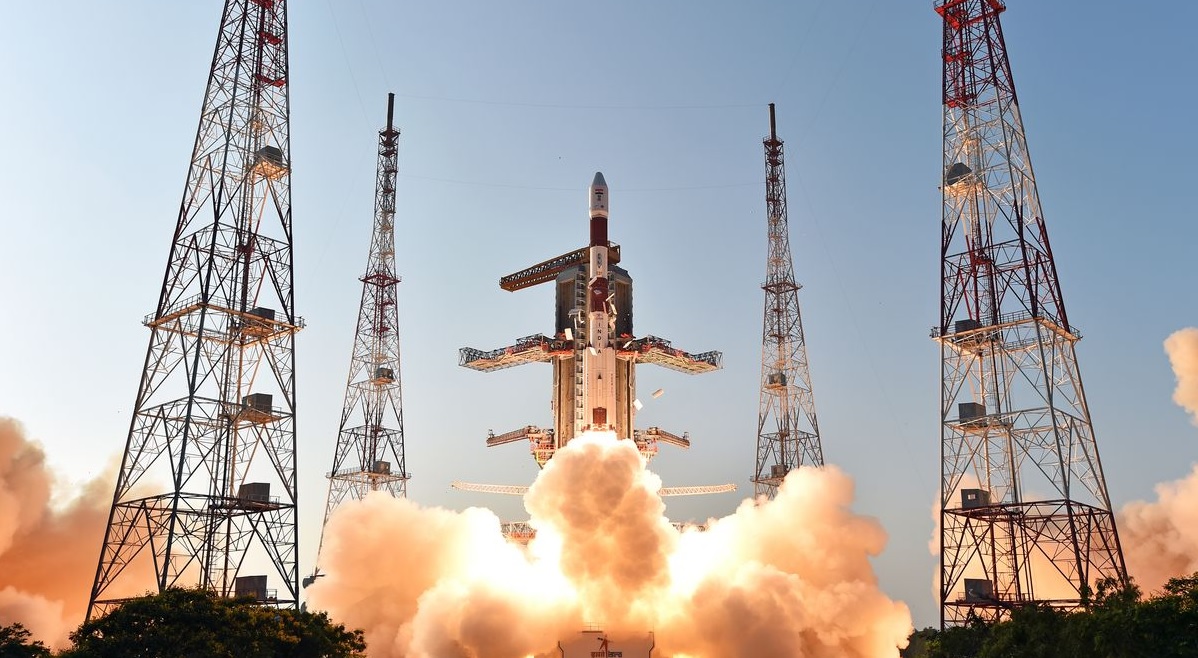 Isro Draws up Ambitious Plan for 2024, says will Launch at Least 12 Missions
Isro Draws up Ambitious Plan for 2024, says will Launch at Least 12 Missions
-
 Rolls-Royce Unveils a concept Nuclear Reactor that could one day Power a Colony on the Moon
Rolls-Royce Unveils a concept Nuclear Reactor that could one day Power a Colony on the Moon
-
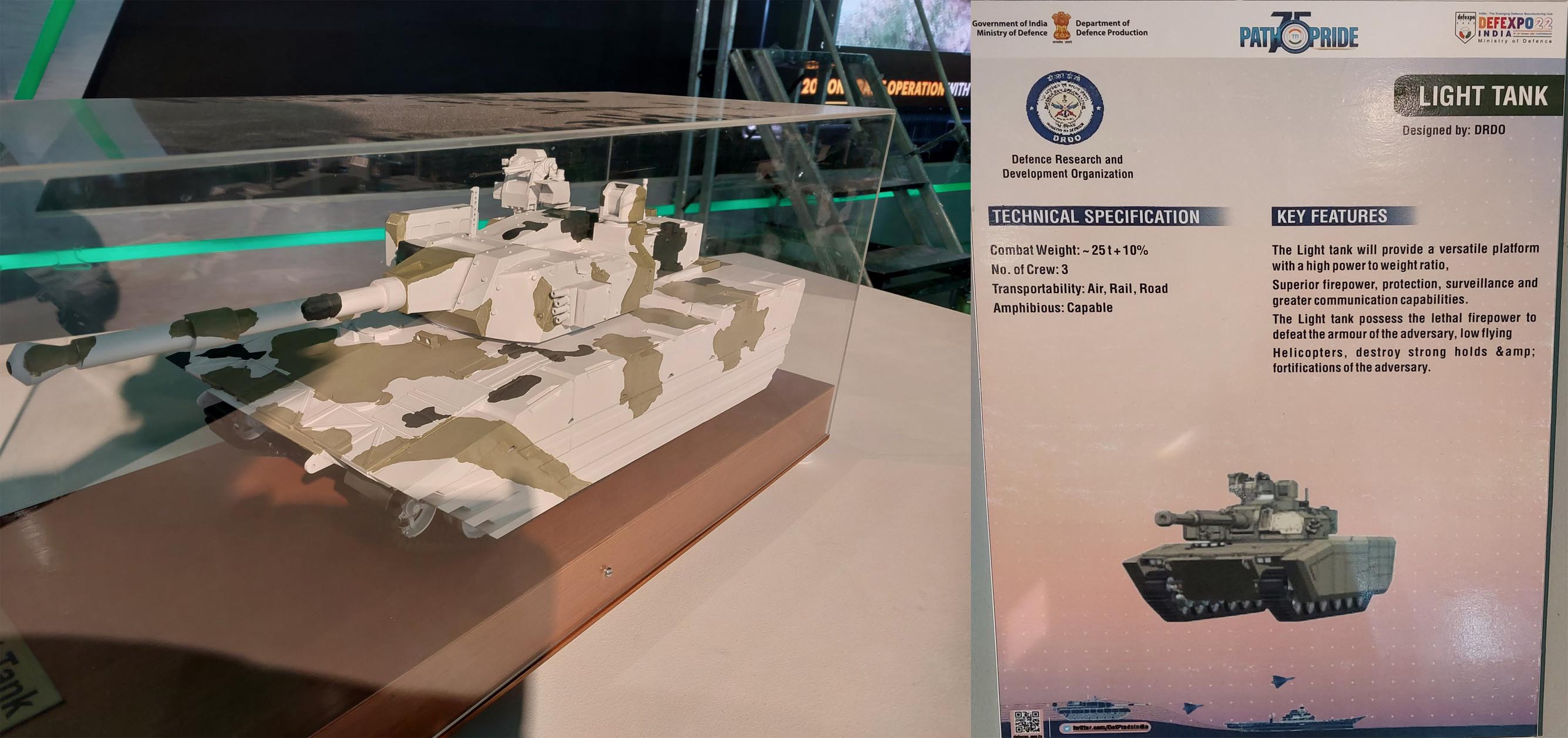 German Engines Available Now But India Chooses American Power Plants for Entire Zorawar Light Tank Project
German Engines Available Now But India Chooses American Power Plants for Entire Zorawar Light Tank Project
-
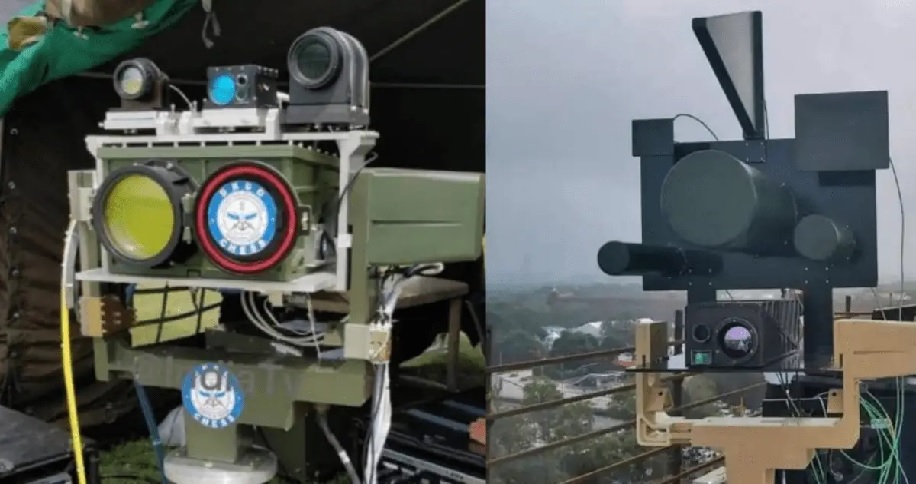 India to Deploy Indigenous Anti-Drone System to Combat Smuggling Activities Along Pakistan Border
India to Deploy Indigenous Anti-Drone System to Combat Smuggling Activities Along Pakistan Border
-
 PM Modi Dedicates Rs 400 Crore Demonstration Fast Reactor Fuel Reprocessing Plant
PM Modi Dedicates Rs 400 Crore Demonstration Fast Reactor Fuel Reprocessing Plant
-
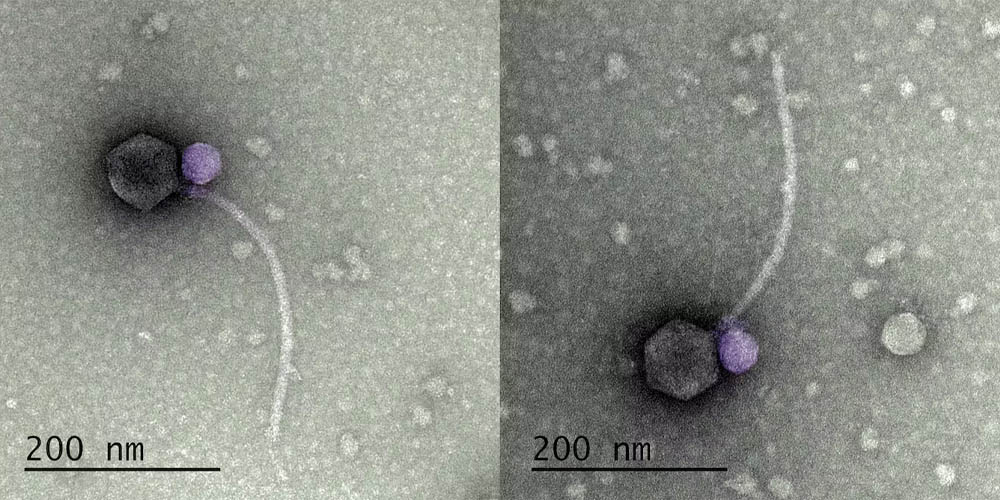 "Vampire Viruses" Found for the First Time in US
"Vampire Viruses" Found for the First Time in US
-
 DRDO Launches Indigenous Assault Rifle 'Ugram' For Armed Forces
DRDO Launches Indigenous Assault Rifle 'Ugram' For Armed Forces
-
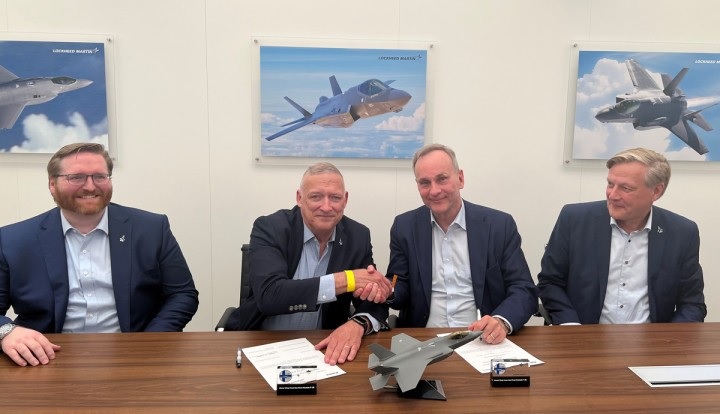 Finland Approves Construction of Patria’s F-35 Block 4 Assembly Facility
Finland Approves Construction of Patria’s F-35 Block 4 Assembly Facility
Top Trending in 4 Days
-
 Scientists Discover World’s 'Largest Snake’ Fossil in Kutch, Gujarat
Scientists Discover World’s 'Largest Snake’ Fossil in Kutch, Gujarat
-
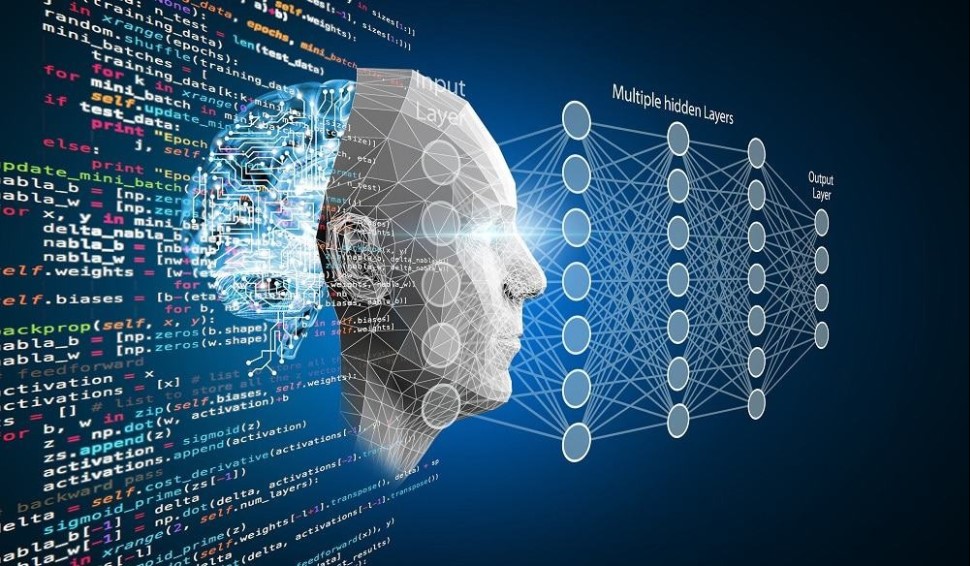 Harnessing the Power of Deep Learning in Healthcare
Harnessing the Power of Deep Learning in Healthcare
-
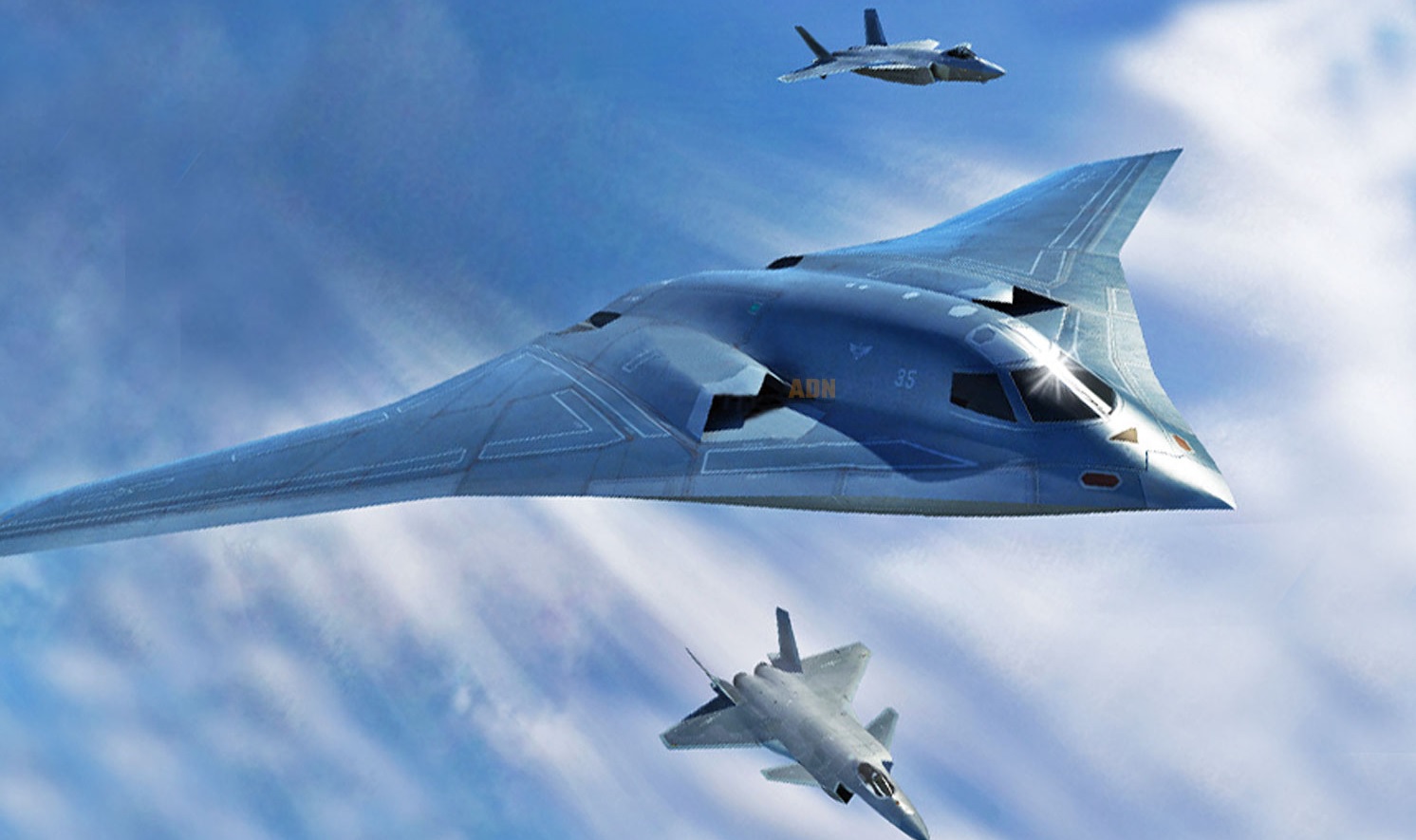 Pentagon Official Downplays Concerns Over China's H-20 Stealth Bomber
Pentagon Official Downplays Concerns Over China's H-20 Stealth Bomber
-
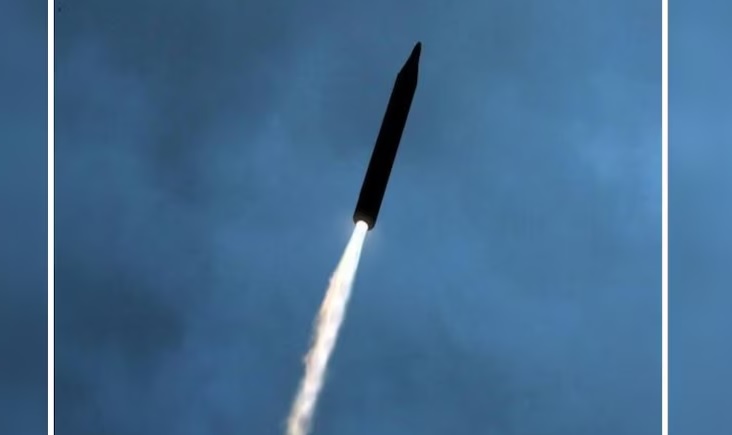 India Successful Test of Unidentified Medium-Range Ballistic Missile Variant
India Successful Test of Unidentified Medium-Range Ballistic Missile Variant
-
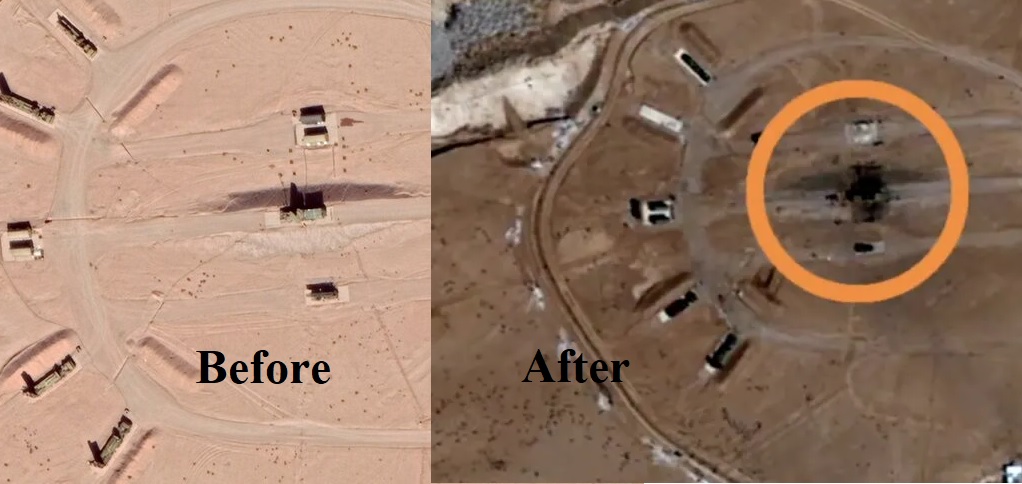 Israel Targets Iran's S-300 Air Defense System in Isfahan Strikes: Reports
Israel Targets Iran's S-300 Air Defense System in Isfahan Strikes: Reports
-
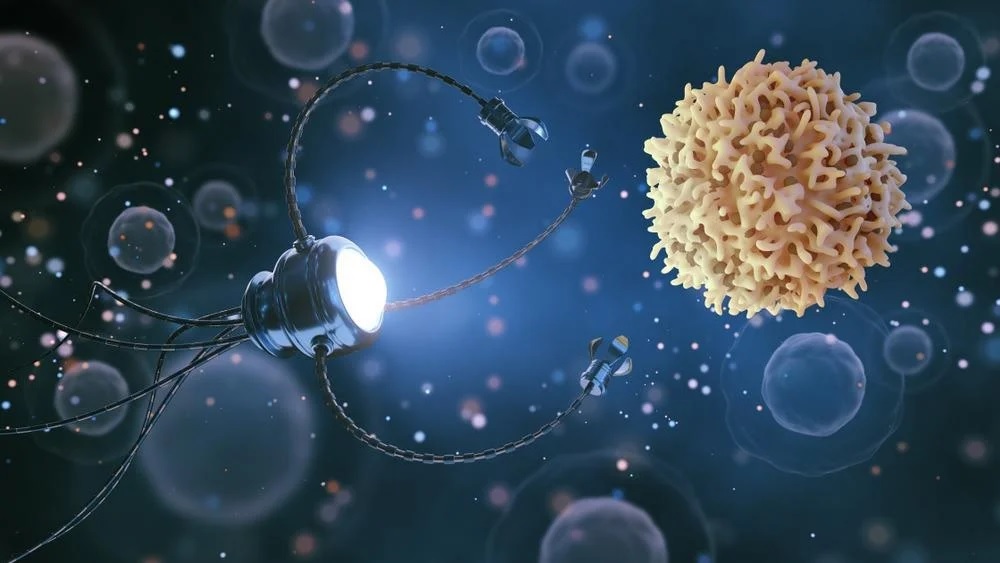 Unveiling the World of Molecular Machines and Nanotechnology
Unveiling the World of Molecular Machines and Nanotechnology
-
 How Rapidly Rising Global Military Budgets Impact Our World
How Rapidly Rising Global Military Budgets Impact Our World
-
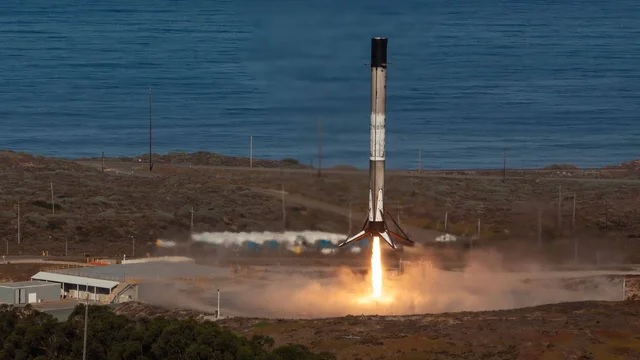 Indian Start-Up 'Space Zone India' Developing SpaceX-Like Reusable Rockets 'RHUMI-1' for Cost-Effective Satellite Launches
Indian Start-Up 'Space Zone India' Developing SpaceX-Like Reusable Rockets 'RHUMI-1' for Cost-Effective Satellite Launches
